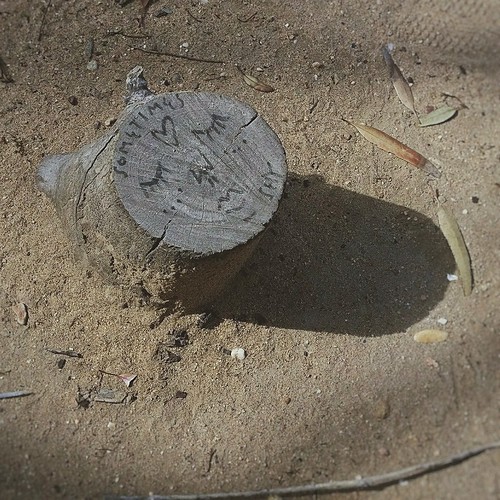Ctive cues from astrocytes and pericytes. a Coculture of CDderived BMECs with astrocytes, pericytes, and also a mixture of astrocytes and pericytes accomplished maximum TEER values exceeding cm and maintained TEER above cm for a minimum of days under all coculture conditions. Every single condition was conducted on triplicate filters with all BMECs 2-Cl-IB-MECA purified from a single differentiation. Each and every filter was measured at three diverse areas around the filter every single day. Values are imply standard deviation from these collective nine technical replicates per situation each day. Maximum TEER values accomplished on day of subculture have been normalized for the TEER in the monoculture handle. Statistical significance was calculated using Student’s unpaired t test. b CCderived BMECs had been cocultured using a mixture of astrocytes and pericytes, attaining a considerable increase in TEER h following barrier induction (p , Student’s unpaired t test). Every condition was performed on triplicate filters with all BMECs purified from a single differentiation. Each filter was measured at 3 different areas around the filter every single day. Values are mean regular deviation from these collective nine technical replicates per condition per day. BMECs have been subsequently stained for occludin and claudin in each handle and coculture circumstances. Scale bars are miPSCderived BMECs to be much more readily accessible to researchers, thereby delivering highfidelity human in vitro BBB models for a wide range of applications. Within this study, current BMEC differentiation protocols were modified to exclude the iPSC expansion phase prior to initiation of differentiation . By controlling initial iPSC seeding density , maximum TEER values of purified BMECs from such differentiations remained consistently in excess of cm, and barrier fidelity, as indicated by TEER above cm, was maintained for any minimum of days, as was similarly achieved within a current microfluidicsbased model us
ing UMderived BMECs . E medium was also employed for iPSC upkeep in place  of mTeSR, as described by others
of mTeSR, as described by others  . Given that we routinely use E medium (a derivative of E medium that lacks development factors promoting pluripotency) for neural differentiations , we further explored its use for differentiating iPSCs to BMECs. Upon differentiation in E medium, immunocytochemical evaluation unexpectedly showed PECAM cells at days of differentiation as opposed to days. We note that alterations in culture strategies and differentiation medium have previously been shown to alter differentiation instances to lineages for instance neuroectoderm and midbrain dopaminergic neurons with all approaches eventually resulting in cells expressing the same characteristic markers. As a result, it is actually unsurprising that adjustments created in differentiation medium resulted in altered differentiation timelines. Following establishing this accelerated differentiation timeline from iPSCs to BMECs utilizing E medium, BMECs have been evaluated for BBB phenotype by TEER measurement and efflux transporter activity. BMECs differentiated in E medium maintained a steady barrier above cm for days, longer than previously published reports making use of related Transwellbased solutions while attaining comparable maximum TEER values to UMderived BMECs. BMECs differentiated employing PubMed ID:https://www.ncbi.nlm.nih.gov/pubmed/26089446 E medium and UM also had no statistical distinction in efflux transporter activity for Pglycoprotein and MRP members of the family. BMEC differentiation usingHollmann et al. Fluids Barriers CNS :Web page ofE medium was further validated in iPSC lines CD, CC, and SM. CD and CCd.Ctive cues from astrocytes and pericytes. a Coculture of CDderived BMECs with astrocytes, pericytes, in addition to a mixture of astrocytes and pericytes achieved maximum TEER values exceeding cm and maintained TEER above cm for any minimum of days under all coculture situations. Every situation was performed on triplicate filters with all BMECs purified from a single differentiation. Each filter was measured at three distinct places around the filter every single day. Values are mean regular deviation from these collective nine technical replicates per condition each day. Maximum TEER values achieved on day of subculture have been normalized towards the TEER on the monoculture control. Statistical significance was calculated utilizing Student’s unpaired t test. b CCderived BMECs had been cocultured using a mixture of astrocytes and pericytes, reaching a significant increase in TEER h after barrier induction (p , Student’s unpaired t test). Each condition was carried out on triplicate filters with all BMECs purified from a single differentiation. Each filter was measured at three distinct areas around the filter every day. Values are mean standard deviation from these collective nine technical replicates per situation each day. BMECs were subsequently stained for occludin and claudin in each manage and coculture conditions. Scale bars are miPSCderived BMECs to become a lot more readily accessible to researchers, thereby supplying highfidelity human in vitro BBB models for a wide range of applications. In this study, existing BMEC differentiation protocols were modified to exclude the iPSC expansion phase before initiation of differentiation . By controlling initial iPSC seeding density , maximum TEER values of purified BMECs from such differentiations remained regularly in excess of cm, and barrier fidelity, as indicated by TEER above cm, was maintained to get a minimum of days, as was similarly accomplished within a recent microfluidicsbased model us
. Given that we routinely use E medium (a derivative of E medium that lacks development factors promoting pluripotency) for neural differentiations , we further explored its use for differentiating iPSCs to BMECs. Upon differentiation in E medium, immunocytochemical evaluation unexpectedly showed PECAM cells at days of differentiation as opposed to days. We note that alterations in culture strategies and differentiation medium have previously been shown to alter differentiation instances to lineages for instance neuroectoderm and midbrain dopaminergic neurons with all approaches eventually resulting in cells expressing the same characteristic markers. As a result, it is actually unsurprising that adjustments created in differentiation medium resulted in altered differentiation timelines. Following establishing this accelerated differentiation timeline from iPSCs to BMECs utilizing E medium, BMECs have been evaluated for BBB phenotype by TEER measurement and efflux transporter activity. BMECs differentiated in E medium maintained a steady barrier above cm for days, longer than previously published reports making use of related Transwellbased solutions while attaining comparable maximum TEER values to UMderived BMECs. BMECs differentiated employing PubMed ID:https://www.ncbi.nlm.nih.gov/pubmed/26089446 E medium and UM also had no statistical distinction in efflux transporter activity for Pglycoprotein and MRP members of the family. BMEC differentiation usingHollmann et al. Fluids Barriers CNS :Web page ofE medium was further validated in iPSC lines CD, CC, and SM. CD and CCd.Ctive cues from astrocytes and pericytes. a Coculture of CDderived BMECs with astrocytes, pericytes, in addition to a mixture of astrocytes and pericytes achieved maximum TEER values exceeding cm and maintained TEER above cm for any minimum of days under all coculture situations. Every situation was performed on triplicate filters with all BMECs purified from a single differentiation. Each filter was measured at three distinct places around the filter every single day. Values are mean regular deviation from these collective nine technical replicates per condition each day. Maximum TEER values achieved on day of subculture have been normalized towards the TEER on the monoculture control. Statistical significance was calculated utilizing Student’s unpaired t test. b CCderived BMECs had been cocultured using a mixture of astrocytes and pericytes, reaching a significant increase in TEER h after barrier induction (p , Student’s unpaired t test). Each condition was carried out on triplicate filters with all BMECs purified from a single differentiation. Each filter was measured at three distinct areas around the filter every day. Values are mean standard deviation from these collective nine technical replicates per situation each day. BMECs were subsequently stained for occludin and claudin in each manage and coculture conditions. Scale bars are miPSCderived BMECs to become a lot more readily accessible to researchers, thereby supplying highfidelity human in vitro BBB models for a wide range of applications. In this study, existing BMEC differentiation protocols were modified to exclude the iPSC expansion phase before initiation of differentiation . By controlling initial iPSC seeding density , maximum TEER values of purified BMECs from such differentiations remained regularly in excess of cm, and barrier fidelity, as indicated by TEER above cm, was maintained to get a minimum of days, as was similarly accomplished within a recent microfluidicsbased model us
ing UMderived BMECs . E medium was also applied for iPSC maintenance in spot of mTeSR, as described by others . Offered that we routinely use E medium (a derivative of E medium that lacks growth factors promoting pluripotency) for neural differentiations , we further explored its use for differentiating iPSCs to BMECs. Upon differentiation in E medium, immunocytochemical analysis unexpectedly showed PECAM cells at days of differentiation as an alternative to days. We note that modifications in culture approaches and differentiation medium have previously been shown to alter differentiation instances to lineages for instance neuroectoderm and midbrain dopaminergic neurons with all solutions ultimately resulting in cells expressing exactly the same characteristic markers. For that reason, it can be unsurprising that alterations made in differentiation medium resulted in altered differentiation timelines. Just after establishing this accelerated differentiation timeline from iPSCs to BMECs employing E medium, BMECs have been evaluated for BBB phenotype by TEER measurement and efflux transporter activity. BMECs differentiated in E medium maintained a MedChemExpress UKI-1C stable barrier above cm for days, longer than previously published reports employing related Transwellbased methods though reaching comparable maximum TEER values to UMderived BMECs. BMECs differentiated making use of PubMed ID:https://www.ncbi.nlm.nih.gov/pubmed/26089446 E medium and UM also had no statistical difference in efflux transporter activity for Pglycoprotein and MRP family members. BMEC differentiation usingHollmann et al. Fluids Barriers CNS :Page ofE medium was further validated in iPSC lines CD, CC, and SM. CD and CCd.
